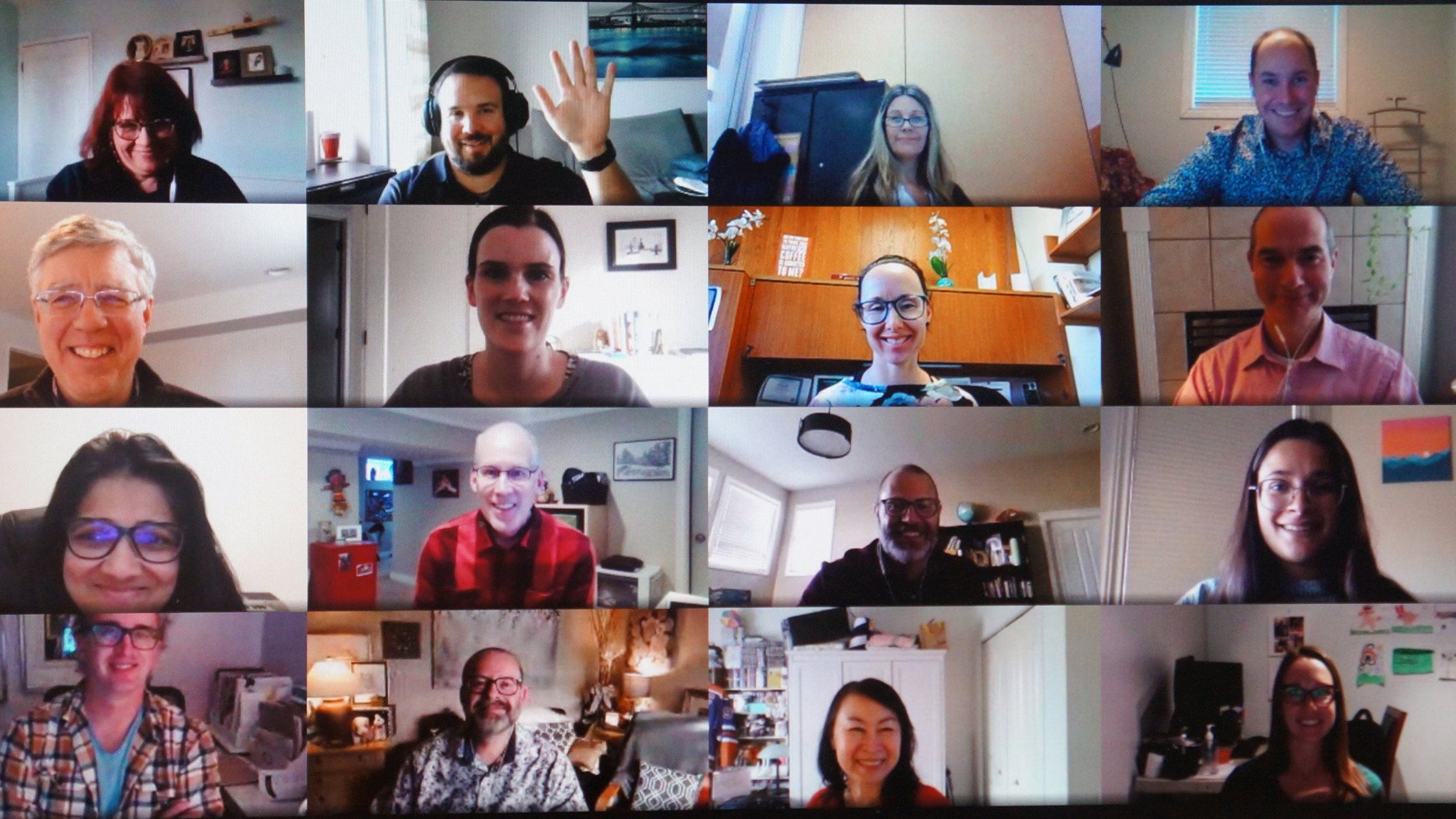
A thoughtful listener and a calm voice — these are the qualities that we all seek when looking for support, and they are what you can expect to be met with if you ever find yourself placing a call to the U of A’s Rapid Response COVID-19 Triage Team. Connecting concerned staff and students to guidance, public health contact tracing teams, cleaning and scheduling coordination, and more, the triage team has been supporting the U of A community through the pandemic. Leading this dedicated group are Philip Stack and Kevin Friese, co-chairs of the U of A’s Public Health Response Team. We talked with them to learn more about the COVID-19 rapid response experience and how the Triage Team, with the help of our community, is keeping everyone safe.
What does the full picture of the U of A Rapid Response Triage Team look like? What all do they do?
The short answer is that they are one of the cornerstone teams working to keep our campuses safe during COVID-19. To do that, the team serves as our frontline taking the phone calls of instructors and supervisors who have students or staff that are legally required to self-isolate or have tested positive for COVID-19 AND have been on campus in the past 14 days. Once a call comes in, the triage team then works closely with Alberta Health Services (AHS) to coordinate contact tracing. They also connect with various university reps to coordinate any further response needs including cleaning, schedule adjustments, academic accommodations, or community notifications. The triage team also provides support and guidance to the instructor or supervisor, and connects them with student and staff health support services in the Dean of Students Office and Human Resources Services.

Who is on the team?
The team is made up of about 40 trained individuals, including health sciences students and staff who have a wealth of experience from across the university.
What should a student or employee do if they test positive for COVID-19 AND have been on campus in the last 14 days?
If a student or employee tests positive or is legally required to isolate for 14 days, they’ll need to contact one of their instructors or supervisors. Once they’ve made that contact, it’s up to the instructor or supervisor to request a phone call from the triage team by emailing phrt.triage@ualberta.ca. Usually in a matter of minutes, a member of the triage team will get in touch with the instructor/supervisor to assist and gather more information.
Would the triage team be the ones who let others on campus know about individuals and areas affected by COVID-19?
If someone has tested positive, anyone who has come into close contact with them while on campus will be contacted directly by the AHS contact tracing team or a PHRT representative. If you are not contacted, you have not been affected and are considered safe.
What’s a close contact, and could you give an example??
AHS defines a close contact as anyone that was within two metres of a positive case of COVID-19 for more than 15 minutes, even if a mask was worn during that contact. When there is a case on a sports team, all members of the teams playing each other are considered close contacts for sports that involve close, sustained or intermittent and repeated contact. Close contacts are legally required to quarantine for 14 days from the last date of exposure.
How busy has the team been? Have there been many positive tests within our community?
Well, we can only speak to our on-campus community as the triage team only addresses COVID-19 risks on our campuses. During September and October, the triage team received about 350 calls of possible exposures — but of those 350 calls, only a total of 48 individuals tested positive for COVID-19. That includes the small number of students who tested positive during the outbreak in the St. Joseph’s Men’s Residence.
While the number 48 may seem high to some, it’s important to know that the majority of cases were unconnected (i.e. they were not the result of community spread on our campuses), and most of the individuals had actually been off-campus or had no close-campus-contacts when they became infectious and immediately self-isolated at home (which means that there was low to no risk for other individuals on campus).
What’s the most frequently asked question of a triage member?
We’re often asked for individual health advice or to help diagnose symptoms. We have to leave all medical questions to the professionals though. We redirect them to their doctor, AHS, 811 HealthLink or the COVID-19 Online Self-Assessment for Albertans if they are concerned about their health.
The U of A community loves to help. Are you looking for more team members?
We have a full team at the moment, but if anyone is interested in helping, we’d love for them to send us by email at phrtinfo@ualberta.ca.
For more information, please visit the U of A’s Rapid Response Plan webpage (uab.ca/triage).U of A’s Rapid Response Plan webpage (uab.ca/triage).
Quick links:
- What to do if you’re sick
- When and how you will be informed should you be impacted by COVID-19
- Health Screening Guide for Students and Staff
- COVID-19 Information for Albertans: Cases in Alberta
This interview was updated on November 5, 2020.